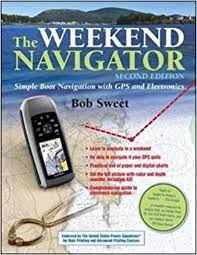Weekend Navigator Course

What is navigation? – Three steps of navigation and piloting without electronics.
Fundamental of waypoint navigation – Practice using a sample cruise exercise, GPS, avoiding hazards, and using landmarks.
The tools of navigation – Use of nautical charts including scales, chart symbology, ATONs, plotting tools, GPS, compass, and other electronics.
Planning with GPS and paper charts – Planning and paper charts, chart plotting, and entering waypoints into your GPS *
Planning with digital charts – Using digital charts, cruise planning software, chart planning software, working with digital charts, chart plotters, and PDA’s.
Planning to avoid danger – Defining the area, marking obstacles, and marking landmarks.
Underway with GPS and paper charts – Steps in waypoint navigation, staying on course, navigating a route with GPS, navigating in a region, marking objects, and keeping track.
Underway with digital charts –Using a chart plotter underway, PDA’s and pocket PC’s, and the future of onboard computers
Double-checking with instruments –Making quick observations and more accurate bearings
Eye of the mariner –Use of headings, ranges, bearings, collision bearings, and rules of the road.
Planning as you go with GPS – Finding where you are and how to plot a safe path to a new destination
Tides, winds, and currents –Knowledge of tides and tidal currents, adjusting for tides and tidal currents, and winds, waves, and other unpredictable events.
Navigating with radar – Range settings for recreational boaters, the radar display, collision avoidance, and navigating with radar
Using depth in navigation – Using depth sounders versus sonars and fish finders, and navigating with depth sounders
Using the radio in navigation –How to use a radio in an emergency, use of the weather radio, and fixed versus handheld VHF
Using an electronic compass – Types of electronic compasses and using the electronic compass for navigation
Using an autopilot in navigation – How to navigate with an autopilot
Navigating harbors and channels with electronics – Importance of good visibility and operating under limited visibility
Navigating under adverse conditions –Operating under limited visibility and influence of the wind and seas
A last word in avoiding danger – Importance and use of electronic alarms and visual observations
Other instrumentation in navigation – Use of weather instruments
Connecting it all together –Basic electronic interconnection and high speed connection